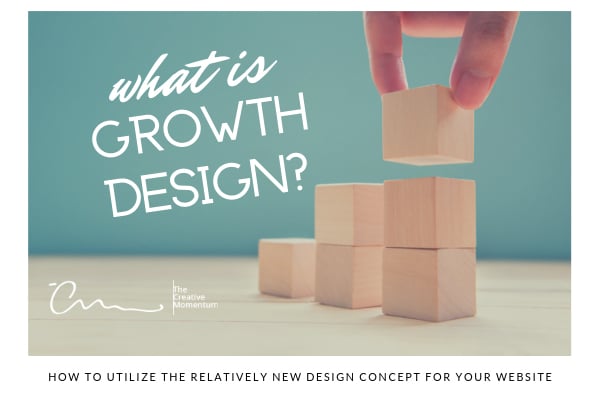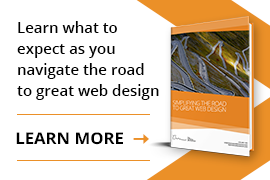
Are you building for growth or longevity? To some people, these are the same thing ... but they’re not. While growth can help create longevity for your business, both objectives require an entirely different strategy to achieve them.
As it relates to your company or brand website, a growth objective demands a unique focus that you won’t necessarily have if you’re simply targeting a product launch. So, what is growth design? In this post, we break down this newer design concept while outlining best practices to help you master this strategy.
What is Growth Design?
In short, growth design focuses on optimizing a website to increase your audience or market share. While you want to keep your current users engaged, the priority is always about making the overall experience on your website user-friendly for new converts. But don’t confuse this with gimmicks. With growth design, you’re not trying to trick people into joining your site or signing up for your newsletter. Instead, you want to create an intuitive site that’s easy to use that will make people want to return time after time.
How is Growth Design Different from Growth Hacking?
Growth design is one aspect of prioritizing UX. However, it’s a specific subset within the user experience—new users. While growth design’s objective is to create a user-friendly website that sustainably attracts more users, growth hacking is solely attempting to beef up your audience or market share.
With growth design, you can build a website that can achieve virality because users view it as easy to use. Meanwhile, if your growth hacking is taking place in a silo that doesn’t leverage web design, your results can suffer.
A perfect example of growth design would be paring down steps within a user flow so that it’s more intuitive for a new visitor to understand and complete. In this example from growth designer Angel Steger, a former Pinterest growth team member, they simplified the pinning process so that first-time users were presented with fewer options to reduce their barrier to entry.
Wait. What’s a “Barrier to Entry”?
A barrier to entry is a term that initially began in economics and references complications that can prevent a business from launching in a specific market. But for websites, a barrier to entry could mean a complicated signup process, a poorly organized site, or presenting too many choices too early—causing new users to feel overwhelmed and abandon the site entirely. So, now that you know what growth design is, how do you prioritize and achieve it?
UX Comes First
If your goal is to grow your audience, then shouldn’t those people actually enjoy using your website? It might seem like an obvious question, but it’s the most important factor. You need to ensure that any changes you make to your website or any user flow you create makes sense and is easy to grasp from their perspective. And most importantly, new users can clearly see what is expected from them and how they can interact with your site.
Less is More
There’s a theory in marketing that is just as applicable in the web design world. The more steps you make a person take, or the more you make them work to guess your objective, they won’t. When intentions aren’t clear, such as with an app that’s difficult to navigate or a user flow that offers too many choices, it’s overwhelming. Rather than sift through your site to decipher next steps, people will leave.
Optimize for People, Not Web Crawlers
Yes, it’s important to make sure that your site can rank properly in search. We all know that Google’s algorithm is wonky, to say the least. But if you’re focusing on making Google happy, you can end up turning off real breathing human beings—the people you need to achieve growth. While we know SEO should be integrated into your design plans, make sure that your site is people-centric.
Design for Good, not Perfection
We know, this might sound counterintuitive. Why wouldn’t you want a website that’s perfect? Well, that’s because sometimes when designers get together and focus on perfection, they fail to stop and test for usability, functionality, and relevance. Not every site needs the craziest bells and whistles to be useful and popular. Your goal is growth, and like we said in the first point—less is more. Create a good website, and after internal tests, release it. Gather real user feedback and tweak as needed to address any pain points.
Don’t go Black Hat
And finally, if your focus is on growth design with the intent of keeping your users around for the long haul, avoid relying on tricks. Whether you want to increase subscriptions or drive signups, be transparent with your intentions. When you’re honest, you build trust, and trust builds relationships. Leave the unscrupulous behavior to the black hatters of the world.
So, now that you know how growth design differs from other forms of UX, it’s time to ask yourself about your overall web design goals. If growth is a major priority, then growth design might be the best track. And when you’re ready to redesign or launch a new site, The Creative Momentum is ready to apply this budding design strategy to your website.


